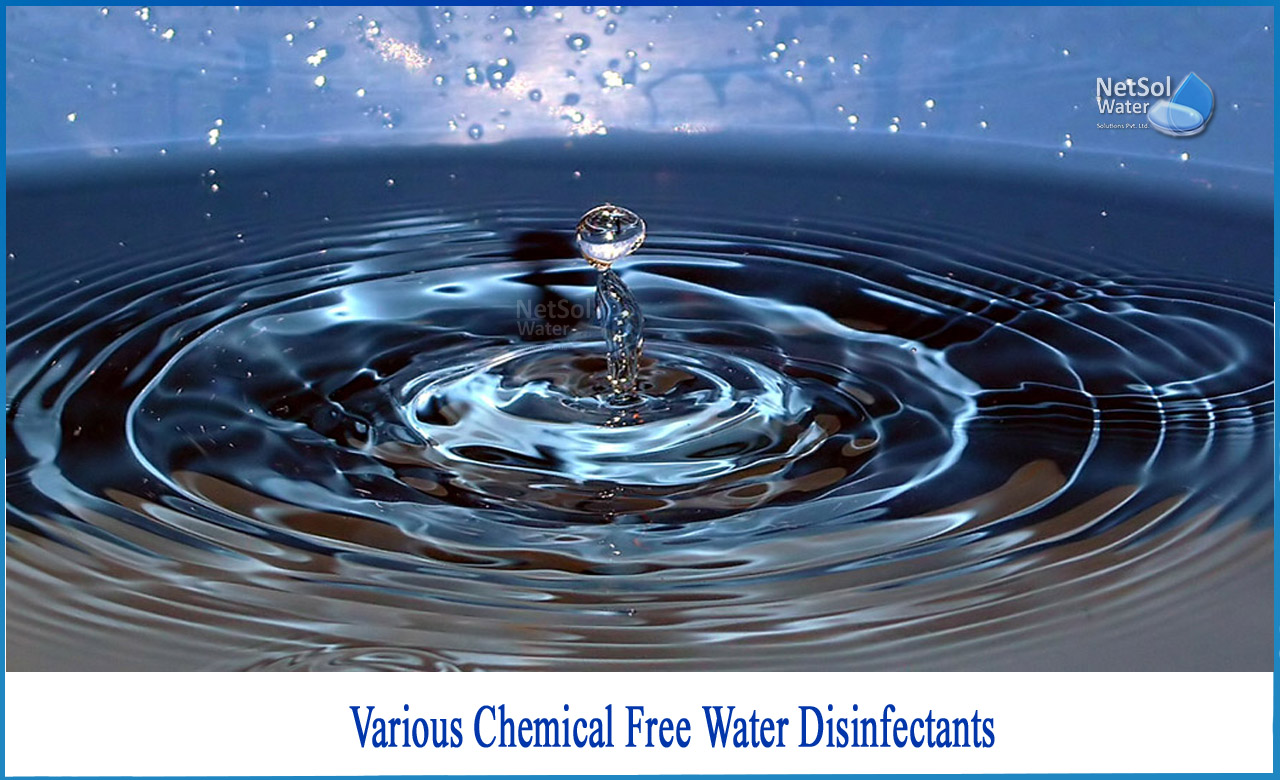How many categories of chemical free water disinfectants?
Chemicals from water treatment and distribution travel the shortest distance to reach drinking water. They are divided into three categories:
1- Substances resulting from the intentional addition of chemicals used in the treatment process for coagulation and disinfection — these chemicals are intentionally added and can result in residues or by-products
2- Disinfectants that are intentionally added with the intention of maintaining a residual in distribution, usually to the tap — these chemicals can also result in by-products
3- Chemicals that leach from distribution or plumbing materials, or that result from pipe corrosion products.
As a disinfectant product, most towns employ chlorine or chloramines. At different periods of the year or for other operational reasons, several towns alternate between chlorine and chloramines. Other disinfectants, including as chlorine dioxide, are used less frequently by utilities. Some water systems that use groundwater may not require the use of a disinfectant.
The use of UV lamps
Different components will cause operational and performance difference in water and wastewater treatment systems. This variation can be due to the different treatment techniques used, the use of chemicals, or the amount of electricity required by the treatment processes. In many treatment systems, a central component analogous to the treatment system's heart and soul receives a great deal of attention. This component is the Ultraviolet (UV) lamps in the case of a UV system.
The proper levels of UV light are generated by a lamp system to remove the pathogenic content of the water to be treated. UV lamps, in general, are made up of a metallic filament that generates an electrical arc that excite mercury vapor. When you excite the vapor, it heats up, increases pressure inside the tube, and emits UV rays. The UVC subtype is preferred for disinfection, however because the light has such a short wavelength that it cannot penetrate through ordinary glass, the lamp's primary body is made up of a quartz sleeve.
The intensity of UV radiation emitted by the UV lamp is referred to as output. The output is determined by the pressure in the lamp, which is increased as the temperature rises.
High: at higher powers, increased radiation output has a stronger effect on germicidal efficiency.
Low: lower radiation output is more energy efficient, but inactivates germs less effectively. The radiation wavelength is produced in a single band at 254 nm at this pressure. This wavelength has been shown to be the most germicidal. The output of this wavelength is more powerful at low pressures.
The internal gas pressure of the bulb is referred to as pressure. The amount of radiation emitted by a gas is determined by its pressure. Only low or medium pressure mercury-vapor lamps will produce UVC light. Light in the visible range will also be produced at higher pressures.
Medium: Above and below 254 nm, a broad band of wavelengths is produced at this pressure. Although the intensity of the 254 nm wavelength is not as strong, the increased pressure allows for coverage of other wavelengths that are not influenced by the 254 nm wavelength.
Lamps with a low pressure and a high output
Both germicidal and electrical efficiency are high with these lamps. Low pressure means less power consumption, while high output means better germicidal efficiency. These lamps are ideal for facilities with reasonably high flows that want to save energy while also having some extra space.
-Spectrum that is monochromatic
-Input power in the middle
-Energy efficiency that is acceptable
-Running temperature in the middle of the range
-Lamp life is good
-A medium-sized footprint (in terms of number of lamps)
Lamps with a medium pressure and a high output
Because they cannot be operated at a low output intensity, these lamps are referred to as medium pressure (MP) lamps. These are the most powerful UV lamps, which are most efficient at greater flow rates in facilities with limited space and the ability to use more electricity.
-Spectrum with multiple colors
-Input power in the high range
-Energy efficiency is reduced
-Running temperature in the high range
-Lamp life is reduced
-The footprint is small (for number of lamps)
Netsol Water is Greater Noida-based leading water & wastewater treatment plant manufacturer. We are industry's most demanding company based on client review and work quality. We are known as best commercial RO plant manufacturers, industrial RO plant manufacturer, sewage treatment plant manufacturer, Water Softener Plant Manufacturers and effluent treatment plant manufacturers. Apart from this 24x7 customer support is our USP. Call on +91-9650608473, or write us at enquiry@netsolwater.com for any support, inquiry or product-purchase related query.



